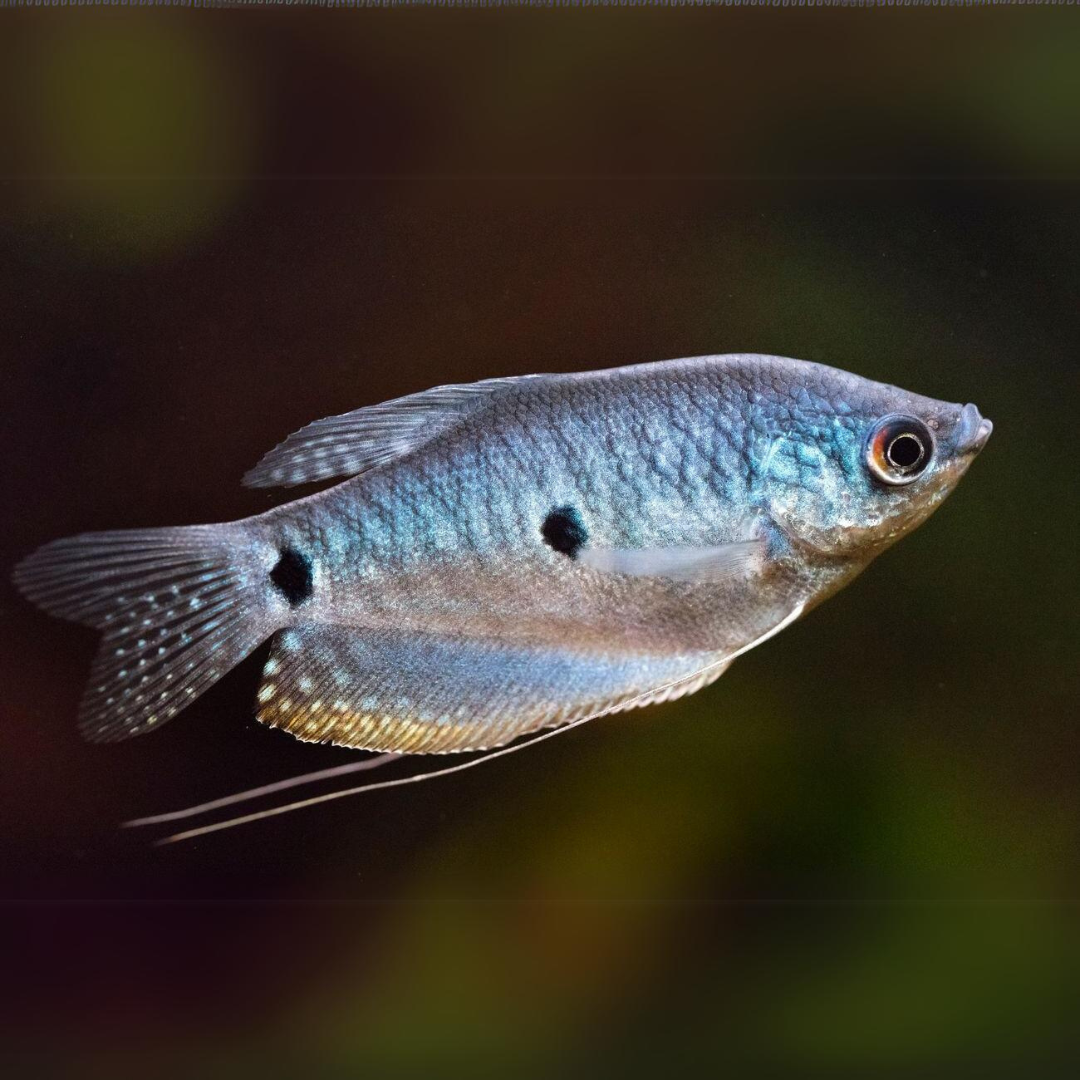Blue gourami fish | semi Adult | Each
Blue gourami fish | semi Adult | Each is backordered and will ship as soon as it is back in stock.
Couldn't load pickup availability
Description
Description
The Blue Gourami (Trichopodus trichopterus) in its semi-adult stage is a captivating and colorful freshwater fish known for its vibrant hues and elegant appearance.
Size and Appearance: As a semi-adult, the Blue Gourami typically measures between 2.5 to 4 inches in length. Its body is a striking shade of blue, which can vary from a soft, pastel blue to a more intense, vivid hue. The scales often shimmer with iridescence, adding a touch of brilliance to its overall look. The fish has a rounded body shape with long, flowing fins that give it a graceful, flowing appearance.
Fins and Tail: The Blue Gourami features long, delicate pectoral fins that resemble threads, enhancing its elegant appearance. Its dorsal and anal fins are also extended and can appear quite flowing, contributing to its serene and graceful swimming style.
Behavior: Blue Gouramis are known for their peaceful and relatively calm demeanor. They are social fish that do well in community tanks with other non-aggressive species. Semi-adults are generally more established in their behaviors and are often seen calmly exploring their environment or interacting with tank mates.
Tank Requirements: The Blue Gourami thrives in a well-maintained aquarium with a temperature range of 74°F to 78°F and a pH level between 6.5 and 7.5. The tank should have plenty of hiding spots, such as plants and decorations, as well as some open swimming space. Gouramis also appreciate a gentle water flow and good filtration.
Diet: This fish is omnivorous and should be fed a varied diet. High-quality pellets or flakes, along with occasional live or frozen foods like bloodworms or brine shrimp, will ensure it receives all the necessary nutrients for health and vibrant coloration.
Compatibility: Blue Gouramis are generally peaceful and can be kept with other non-aggressive fish species. However, males can be territorial towards each other, so it's best to keep them in groups of one male to several females or ensure ample space to reduce any potential conflicts.



